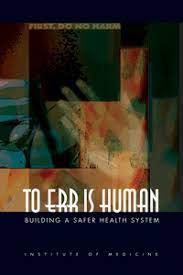Demonstration of Proficiency in Capella NURS-FPX4020 Assessment 1 Enhancing Quality and Safety
By successfully completing this assessment, you will demonstrate your proficiency in the following course competencies and assessment criteria:
Competency 1: Analyze the elements of a successful quality improvement initiative.
- Explain evidence-based and best-practice solutions to improve patient safety focusing on medication administration and reducing costs.
Competency 2: Analyze factors that lead to patient safety risks.
- Explain factors leading to a specific patient-safety risk focusing on medication administration.
Competency 4: Explain the nurse’s role in coordinating care to enhance quality and reduce costs.
- Explain how nurses can help coordinate care to increase patient safety with medication administration and reduce costs.
- Identify stakeholders with whom nurses would need to coordinate to drive quality and safety enhancements with medication administration.
Competency 5: Apply professional, scholarly, evidence-based strategies to communicate in a manner that supports safe and effective patient care.
- Organize content so ideas flow logically with smooth transitions; contains few errors in grammar or punctuation, word choice, and spelling.
- Apply APA formatting to in-text citations and references exhibiting nearly flawless adherence to APA format.
References for Capella NURS-FPX4020 Assessment 1 Enhancing Quality and Safety

- Allen, M. (2013). How many die from medical mistakes in U.S. hospitals? Retrieved from https://www.npr.org/sections/health-shots/2013/09/20/224507654/how-many-die-from-medical-mistakes-in-u-s-hospitals.
- Kohn, L. T., Corrigan, J., & Donaldson, M. S. (Eds.). (2000). To err is human: Building a safer health system. Washington, DC: National Academy Press.
Professional Context
As a baccalaureate-prepared nurse, you will be responsible for implementing quality improvement (QI) and patient safety measures in health care settings. Effective quality improvement measures result in systemic and organizational changes, ultimately leading to the development of a patient safety culture.
Scenario for Capella NURS-FPX4020 Assessment 1 Enhancing Quality and Safety
Consider a previous experience or hypothetical situation pertaining to medication errors, and consider how the error could have been prevented or alleviated with the use of evidence-based guidelines.
Choose a specific condition of interest surrounding a medication administration safety risk and incorporate evidence-based strategies to support communication and ensure safe and effective care.
